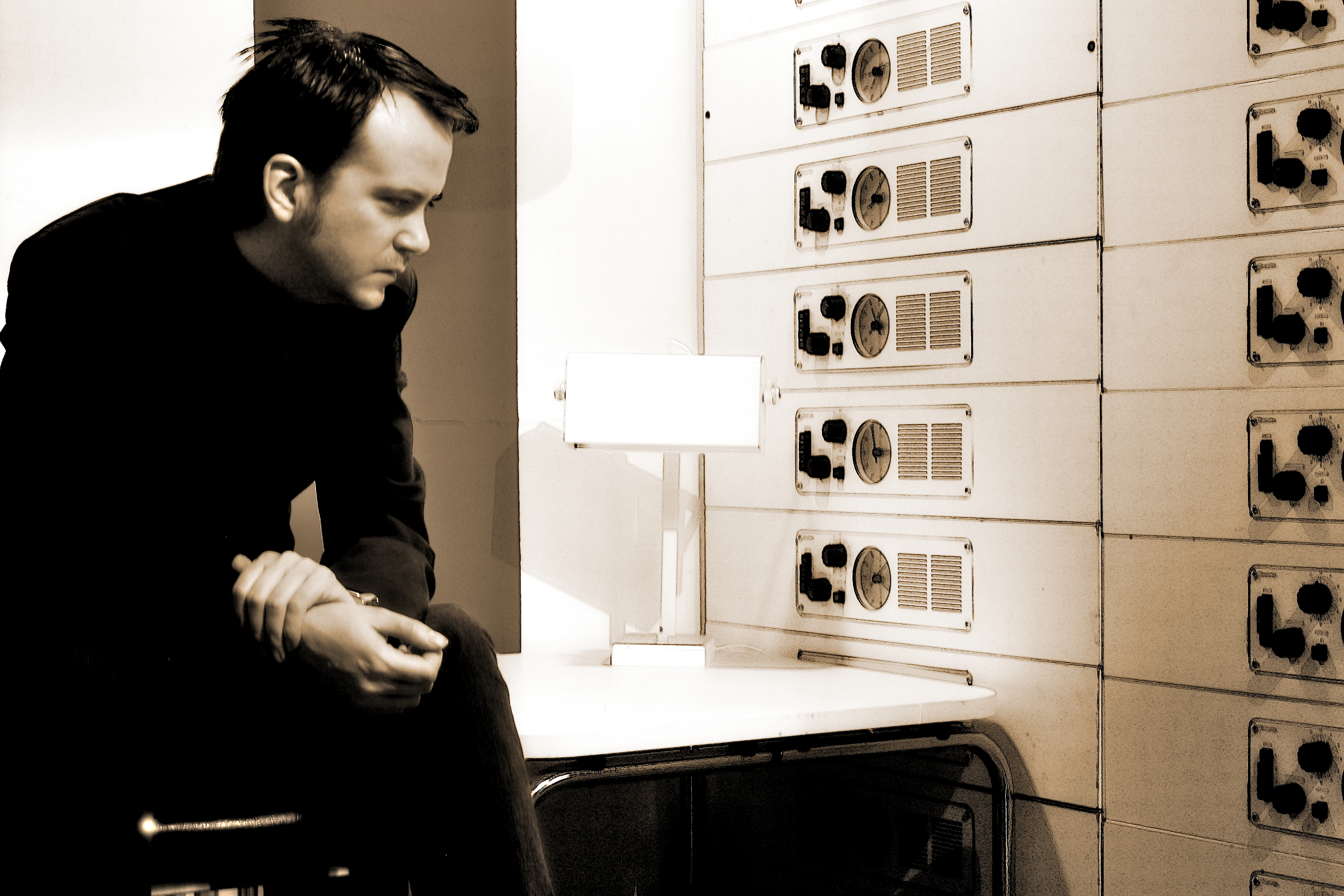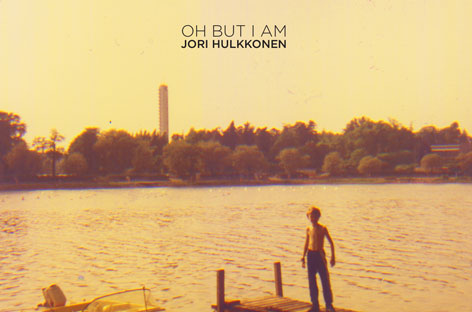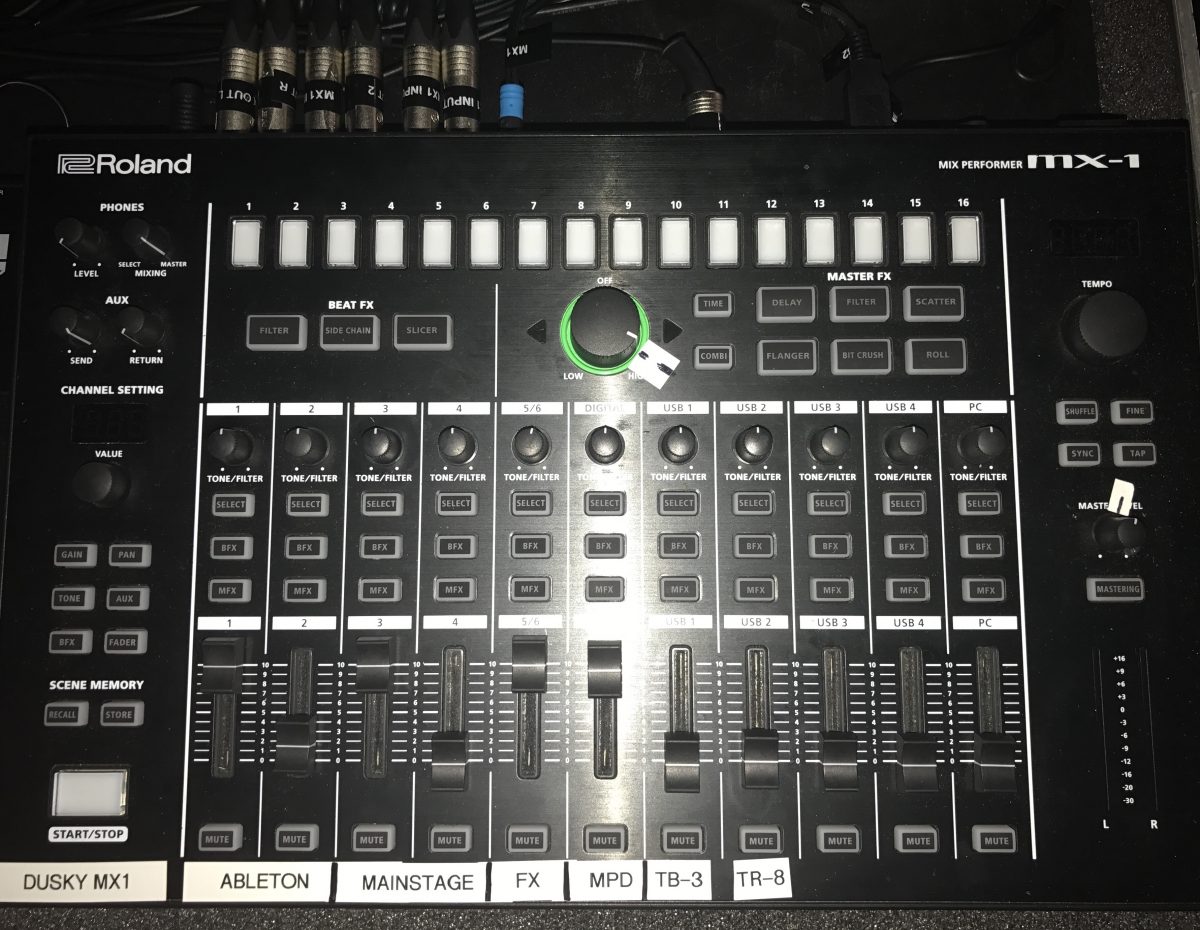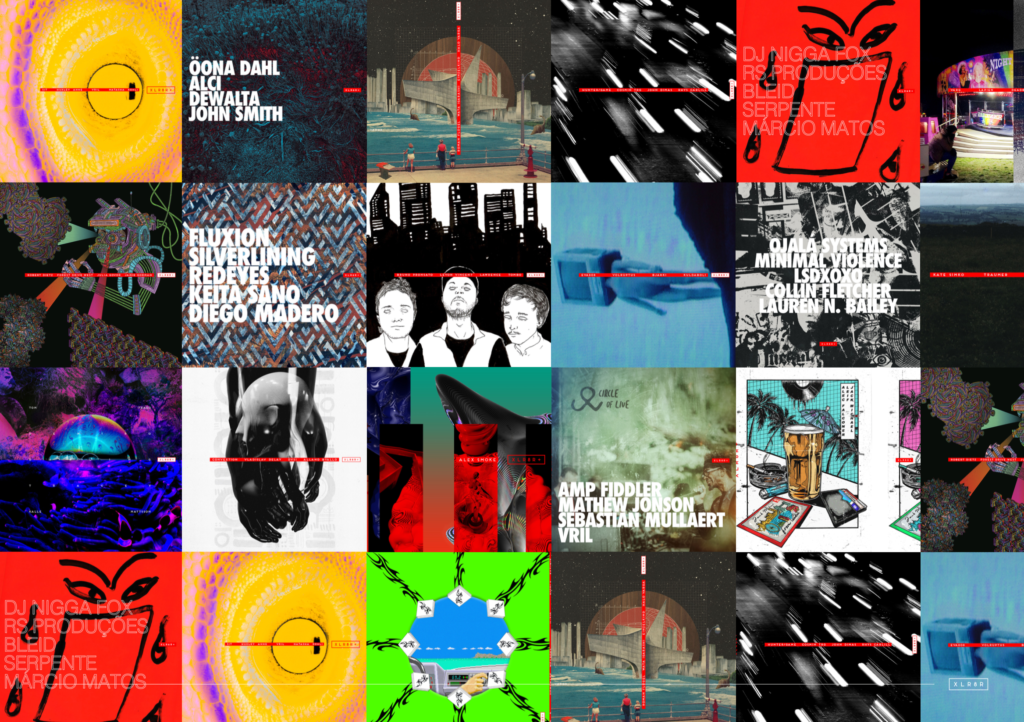Q&A: Jori Hulkkonen
The Finnish DJ-Producer discusses the inspirations behind his new album.

Q&A: Jori Hulkkonen
The Finnish DJ-Producer discusses the inspirations behind his new album.

Finnish DJ-producer Jori Hulkkonen is a man of many hats. Ever since he started making music in 1988, Hulkkonen has produced, as a solo artist or in collaboration, under more than 20 different aliases, including Sin Cos Tan, Acid Symphony Orchestra and, most recently, Nuclear Winter Garden. As a DJ, he has been similarly prolific, having regularly played more than 100 gigs per year across the globe. Over recent years, however, Hulkkonen has made the conscious decision to limit his touring schedule in order to spend more time in the studio—an endeavor that has today seen him release Oh But I Am. The new album marks a return to the dancefloor following Nuclear Winter Garden’s self-titled release in March, and his first full-length under his own moniker in over half a decade. To mark the occasion, and to learn more about the inspirations behind the album, XLR8R sat down with Hulkkonen at his home studio in Kemi, Finland.

Reading your discography, it’s been a remarkable career ever since your debut 12-inch back in 1993. Did you ever anticipate success on this scale?
When I first started producing music in the late ‘80s, I wasn’t thinking about having a career as a musician. I didn’t really know anything about music at the time and it’s just been a steady learning process ever since. At some point you realize that people connect with the music you make and labels begin asking to release your tracks. Over time, things just gradually started to happen and some time in the late ’90s I had to go to university—but I realized I just didn’t have the time to focus on my studies and my music. I had to make a decision and I felt that if I didn’t follow music at that moment, then I would eventually regret it further down the line. I decided to follow it and now here I am, twenty years later.
“I am always trying to push myself as an artist by trying things that I didn’t think I could previously do. I would hate to realise in 10 years that I had been making the same records for the whole of my career.”
Do you believe that the fact that you’re a self-taught musician has helped you push the boundaries by encouraging you to experiment with sounds?
I think of myself as a music lover rather than a music maker. I have always been interested in hearing things that are as versatile as they can be—and I think this comes out through my music. With each of my releases, it’s important for me to do something that hasn’t been done before—something that either I haven’t been able to do or haven’t even thought about doing before. This can be something quite small that doesn’t even come across to the listener, or something quite avant-garde like the Acid Symphony Orchestra project. I am always trying to push myself as an artist by trying things that I didn’t think I could previously do. I would hate to realize in 10 years that I had been making the same records for the whole of my career.
You say that you must try something different with each record. What is the specific difference with Oh But I Am?
Firstly, I do all the vocals myself. Previously I have used vocals, but only by writing the demo and having someone else come and sing it. For me, it feels a lot more personal because when you have someone come and sing what you’ve done, then it’s a slightly different angle. Although it may be technically better, it feels like you lose something. Secondly, one of the points of this album was also not to write any lyrics. When we were recording, we maybe had this phrase or idea but we did the rest ad-lib. I was trying to adopt this old-fashioned approach to lyrics, like in early house records where the lyrics are about love and don’t go too deep.
Had this idea been in your head for quite a while?
In a way, yes. For the past three or four years, I have been working with so many projects with amazing vocalists, for example the EP with John Foxx, the album with the band Sin Cos Tan and also my work with Tiga. By working with all these people, it became a logical step for me to do a solo album based on house music.
Over the course of your career, you’ve released under more than 20 different monikers. Do you find that this variety is an important source of inspiration?
Definitely, and that is one of the key elements in my progression. Every record I do inspires me to try new things and I think that’s important. I have a lot of friends who have been doing this one project with one style of music for many years, but I would find that very boring. I am continually obsessed with making new stuff and trying new things. It means I can go in the studio and mess around while knowing that I am not restricted to one sound—and I really enjoy this artistic freedom because I can always find some sort of output for my work.
“When you’re never trendy then you never become untrendy. For the past twenty years, I have never been the big headliner and this means there is never really any pressure on me to maintain a certain status.”
One of the most interesting things about you is your longevity. Do you put this down to your desire to continually innovate?
I think it’s because I’ve never become that popular. When you’re never trendy, then you never become untrendy. For the past twenty years, I have never been the big headliner, and this means there is never really any pressure on me to maintain a certain status. I’ve seen it happen to lots of artists where they try so hard to maintain something that they achieved—and that pressure is not good for artistic creativity.
Moving on to the new album, it’s been five years since your last LP under your own name. Why the wait?
It wasn’t really intentional. I produced an album for Villa Nah in 2009 and I just clicked with lead singer Juho Paalosmaa, and we decided to set up Sin Cos Tan together. From there, it really took off and we ended up doing three albums in two years. It wasn’t really intentional, but I felt that Sin Cos Tan could be something worth investing it.
But switching back to focus on your own solo material was a conscious decision?
Yes. That came last year following the third Sin Cos Tan album. I thought that in 2015 I wanted to focus on my solo career.
Is there a story behind the Oh But I Am name?
Actually the real story is so boring it’s not really worth telling. I keep writing things down constantly—mainly in the notepad that I carry around—and when I realized that it was the first album I’ve done under my real name in half a decade, I was surprised that it had been such a long a time. I then saw the artwork, which is a photo of me back in the ‘80s, and I wanted a title that was personal and funny. Oh But I Am just worked.

Oh But I Am is very different to the Nuclear Winter Garden album that you put out in March. Do you prefer producing for the dancefloor, or do you prefer producing the more ambient stuff?
That’s been a big question, all throughout my career—and it has always been the case that I try to find the balance. I come from the background of not going to clubs but listening to club music. For me, with club music the focus has always been on the word music rather than the word club. I didn’t really go clubbing until I began playing out myself—and so it has always felt that club music has been a reference rather than the main product. Obviously I have made some records that are made for DJs—and being a DJ has helped me do this—but even today I still have to consciously think whether I want to make something more dancefloor orientated or something more ambient.
So was it your intention to make Oh But I Am dancefloor orientated?
I always wanted the next Jori Hulkkonen album to be more dancefloor-friendly, especially my Sin Cos Tan work has been very pop-orientated over recent years. I felt that as a DJ, I wanted more of my own stuff that I could play.
How long did the new album take to produce?
When I start working on a new album, I always go back to old projects and see if there are any unused bits that I could use now. And there were a few sketches and chord structures that I took—but the main production started last September and ended around April this year. Some of the songs, mainly “Italian Love Affair” and “Ready Player One,” were based on sketches I had produced a little earlier for Sin Cos Tan, but I realised that I wanted this album to have some of the same new wave vibe.
Seven months is a fast turnaround.
That’s true, but it’s just how I have always worked. I think we did all of the Sin Cos Tan albums in the space of just three months. I am very quick in the studio, but I think that comes from experience. The main software I use is Cubase—and I have been using it for 25 years, so the workflow is very fast. I also have my own studio so I don’t get stuck in technical difficulties.
“I try to change the process every now and then just to keep myself fresh. Even just changing the gear in my studio—or even just moving a synth from one wall to another—helps me move forward with my sound.”
Have your production processes changed over time, and is this a source of inspiration?
I try to change the process every now and then just to keep myself fresh. Even just changing the gear in my studio—or even just moving a synth from one wall to another—helps me move forward with my sound. It’s a continual process of having the software that I know inside out—that is like the brain—and then having all the hardware that I can work with without having to look at the computer, which allows me to improvise. In the 25 years that I’ve been making records, my processes have changed dramatically because of what I have learned and also due to the development of new technologies.
Would you say that most of your tracks are conceptualized prior to recording, or are they mostly just a result of spontaneous jamming?
It works both ways. There are some songs that I have written at home on the piano and recorded them on my phone before taking them to the studio. On the other hand, some tracks are just made when I begin messing around with a drum machine and have come up with a bassline and a hook, which then inspires me to come up with other ideas. Even if I don’t have any ideas, I come to the studio and turn on the equipment in the hope that something will come.




You’re obviously a big ambassador for hardware production, but has this always been the case?
When I started making music in 1988, that was the only option. You would have a computer that would be just a sequencer, but this would be used with synths and drum machines. You would have to improvise a lot to get the most out of the limited equipment that you had, and that was very good creatively because when you’re limited to what you can do you end of stretching your imagination. These days, with just one piece of software, you can do sonically anything you can think of—and it is very easy to become lazy which leads to a mediocre end result. This is something I try to keep in mind today, and I focus on a small number of key instruments and try to get the most out of them as possible—which I think creates something that you cannot get out of a software emulator.
And do the production processes change from track to track?
Yes. For example the last track on the album, “Exotica Memoirs,” was produced using this old organ in the studio next to mine. I really wanted to use that for one of the tracks and the idea was to sit down with it and produce a more pop-orientated sound, something akin to Metronomy. This was a very different approach to all the other tracks. On the other hand, “Cape Town People” was produced as a homage to the sound of 1995, which was a really important time in my career, and I wanted to get the sound of that time in that track. This was a very technical approach to production, something very different to having an organ and writing a song.
“One of my strengths, if I have any, is that I am good at taking a track to its final destination, and it’s not something I can say out loud because it’s very hard to determine. It’s more of an intuition.”
How do you know when a track is done?
I think it comes from trial and error. One of my strengths, if I have any, is that I am good at taking a track to its final destination, and it’s not something I can say out loud because it’s very hard to determine. It’s more of an intuition.
“If it’s 3am and I have an idea, there is no other option but to go to the studio and work on it.”
You’re known to spend over 10 hours a day in the studio—but does the production process go around the clock?
Yes, it’s a lifestyle. Whatever I am doing, even when I am jogging, I am always coming up with ideas and I will start humming it to record on my phone. If it’s 3am and I have an idea, there is no other option but to go to the studio and work on it.
What other musical projects have you got coming up?
I have a new EP with Sin Cos Tan next month, and we’ve also started working on our fourth album. We have the songs, but it doesn’t yet feel like an album, and so decided to choose three songs and do an EP of those. There is also a Jori Hulkkonen 12-inch coming out soon, which is two tracks from me and a remix. I am also working on some new ideas for the new Jori Hulkkonen album…because I don’t want it to be five years until the next one.

